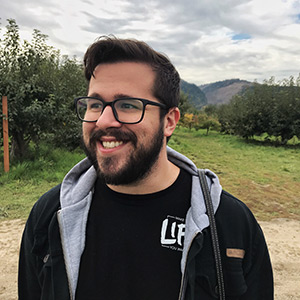Founded in 2016, land-based salmon farmer Pure Salmon may be relatively new to the aquaculture sector. But its founders are aiming to become the leaders in global salmon aquaculture in due time.
Pure Salmon is owned by private equity funds managed by Singapore-based 8F Asset Management, a private equity manager focused on impact investing. Pure Salmon has invested in a huge expansion of land-based salmon farming around the world, and has plans to launch operations across the globe with projects planned in Japan, France, North America, China, Southeast Asia, and Africa.
Right now, the company sells fish of four kilograms and larger to Poland’s domestic market, including to local retail chains, foodservice outlets, and luxury restaurants. Currently, its only production comes from its recirculating aquaculture system (RAS) facility near Płońsk, Poland, which now produces 450 tons of salmon annually. That facility serves as proof-of-concept and has paved the way for expansion globally, Martin Fothergill, a co-founder and partner of 8F Asset Management, told SeafoodSource.
“Pure Salmon was created for the sole-purpose of developing large-scale, land-based salmon farming,” Fothergill said. “Our mission is to provide sustainable, environmentally friendly salmon production.”
Building out operations in different countries and focusing on local distribution is key to the success of Pure Salmon, Fothergill said.
“One of the keys to this machine is the consumer and their thoughts on how their fish is farmed and, more critically, where it is farmed. They’re asking, ‘How did this fish get to my plate?’ and ‘What are the food miles on this fish?’” he said.
The increased viability of land-based fish farming has allowed aquaculture operations to set up shop in areas that cannot support sea-based farms. This gives Pure Salmon the opportunity to build facilities within a relatively short trucking distance of major markets and giving consumers a more local option for salmon, instead of buying imports from faraway locations such as Norway or Chile.
“Invariably, markets in North American, Europe, and Asia need this fresh salmon to be transported by air, so you’re potentially losing freshness of the product. That transportation costs money, so the whole operation costs more. And it’s obviously less environmentally friendly,” Fothergill said.
For Pure Salmon, RAS capabilities are a game-changer, and the company is aiming to slash travel time for its seafood across the board. In order to expand into new markets while maintaining a local shipping strategy, the company is focusing on smaller operations. Instead of building two large farms in Poland and shipping its fish across the world, Pure Salmon plans to build farms that produce 10,000 to 20,000 tons annually to scale the business properly and reduce risks that come with overproducing in one location.
“If you have a problem, be it a biological problem, a physical problem or even a market problem – people start buying less fish or tax rates are suddenly hiked up 40 percent – you are diversifying the company's overall risk by adding multiple facilities,” Fothergill said.
Fothergill added that job creation – Pure Salmon estimates it will create 160 to 170 new local jobs per facility – has been a big factor in getting authorities in several different countries and regions on-board with its RAS project development.
Pure Salmon has set the goal of producing a combined 260,000 tons of salmon per year globally once all of its planned RAS facilities are operational. In February 2019, Pure Salmon revealed Tazewell County, Virginia, will be the location of its farm in North America, and in January 2020, it said it will build its European RAS facility in Bologne-Sur-Mer, France. Construction on both facilities is likely to begin in late 2020, with fish from those farms hitting the market in 2023. Additionally, in July 2019, it announced it will build a USD 250 million (EUR 224 million), 20,000 MT facility in Lesotho, a country close to South Africa’s major markets. And construction on a facility in Japan is slated to begin in the next couple months, with the goal of having fish on the market by early 2022. However, the company plans to import Pure Salmon into the areas where it plans to launch months before production comes online in order to begin familiarizing local consumer to the brand.
In other words, Fothergill said, he doesn’t want customers to pick Pure Salmon salmon because it’s the most prominent fish on display at their local seafood counter. He wants consumers to seek out the Pure Salmon brand specifically.
“The slow development of the Pure Salmon brand and building that recognition is important because, generally speaking, salmon is not branded,” Fothergill said. “In the industry, we know the names of these companies, but consumers think of the brand of salmon that they buy being the supermarket that they buy it from. I buy my salmon from Walmart or whatever it is.”
Photo courtesy of Pure Salmon







